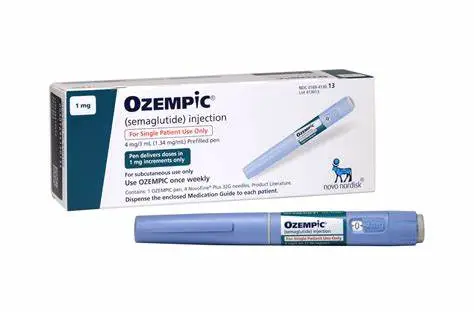weight loss
How Many Units is 1 mg of Ozempic? A Complete Guide to Dosing
How Many Units is 1 mg of Ozempic? A Comprehensive Guide
If you’re using Ozempic (semaglutide) for managing type 2 diabetes or for weight loss, understanding how the medication is dosed and administered is crucial for getting the right amount of treatment. One of the most common questions users have is: How many units is 1 mg of Ozempic?
In this post, we’ll answer this question, explain how to convert Ozempic dosages, and provide tips for administering the correct amount of medication.
🧮 Ozempic Dosing Basics: How Many Units in 1 mg?
Ozempic comes in a pre-filled pen that delivers semaglutide in specific doses, typically in 0.25 mg, 0.5 mg, or 1 mg increments. The key to understanding how many units are in 1 mg of Ozempic is to know that the pen is calibrated to deliver doses in “units.”
Here’s the important conversion:
-
1 mg of Ozempic is equivalent to 100 units.
Each unit of Ozempic in the pen delivers 0.01 mg of the active ingredient (semaglutide). So, if you need a 1 mg dose, you would use 100 units of the pen.
🖊️ Example of Dosing with Ozempic Pen
Let’s say your healthcare provider prescribes 1 mg of Ozempic per week. To deliver this dose, you would set your pen to 100 units and administer it once a week.
📊 How to Set the Ozempic Pen to 1 mg
Here’s a step-by-step guide to set your Ozempic pen:
-
Attach the needle to the pen.
-
Prime the pen: Turn the dose selector to 0.25 mg or the minimum dose and press the button to release a drop of the medication.
-
Turn the dose selector to 1 mg (100 units).
-
Inject the medication as prescribed by your doctor.
Note: Always follow your healthcare provider’s instructions and never adjust your dose without consulting them first.
💡 Why Understanding Units is Important
While Ozempic is dosed in milligrams (mg), the pen delivers the medication in units. Knowing how many units make up your prescribed dose is essential to ensure you’re getting the right amount of medication. Taking too little or too much can affect your blood sugar control or weight management.
🚨 What to Do if You Mistakenly Use the Wrong Dose
If you’ve accidentally set your Ozempic pen to the wrong dose (for example, injecting too much or too little), don’t panic. Here’s what you should do:
-
Too much: If you accidentally inject more than prescribed, contact your healthcare provider immediately. They may monitor you for any side effects or symptoms.
-
Too little: If you accidentally inject less than your prescribed dose, don’t inject more to compensate. Simply resume your normal schedule.
Reminder: Always double-check the dosage before injecting to avoid any errors.
🗓️ Weekly Dosage Schedule for Ozempic
Ozempic is typically administered once a week. Your doctor will guide you on how much to inject based on your individual needs. A common dosing schedule is:
-
Week 1-4: 0.25 mg (25 units)
-
Week 5+: 0.5 mg (50 units)
-
Week 9+: 1 mg (100 units)
However, your dosage may vary based on your treatment plan.
🧊 Proper Storage of Ozempic
To ensure the effectiveness of your Ozempic pen, it’s important to store it properly:
-
Unopened pens: Keep them in the refrigerator (36°F to 46°F / 2°C to 8°C).
-
Opened pens: After use, the pen can be stored at room temperature (below 86°F / 30°C) for up to 56 days.
Never freeze Ozempic, and always keep it away from direct sunlight or heat sources.
📞 When to Contact Your Doctor
If you have concerns about your Ozempic dosage or are unsure about how many units you need, don’t hesitate to contact your doctor. They will be able to clarify your treatment plan and help you with any dosing questions.
📝 Conclusion: Understanding Your Ozempic Dose
Understanding how many units are in 1 mg of Ozempic is an important step in using this medication correctly. To recap, 1 mg of Ozempic equals 100 units, which is how your pen is calibrated to deliver the proper dosage.
By following your prescribed dosing schedule, properly setting the pen, and ensuring correct storage, you can use Ozempic safely and effectively to manage your condition.
Pro Tip: Always consult your healthcare provider for any concerns regarding dosage or side effects.

